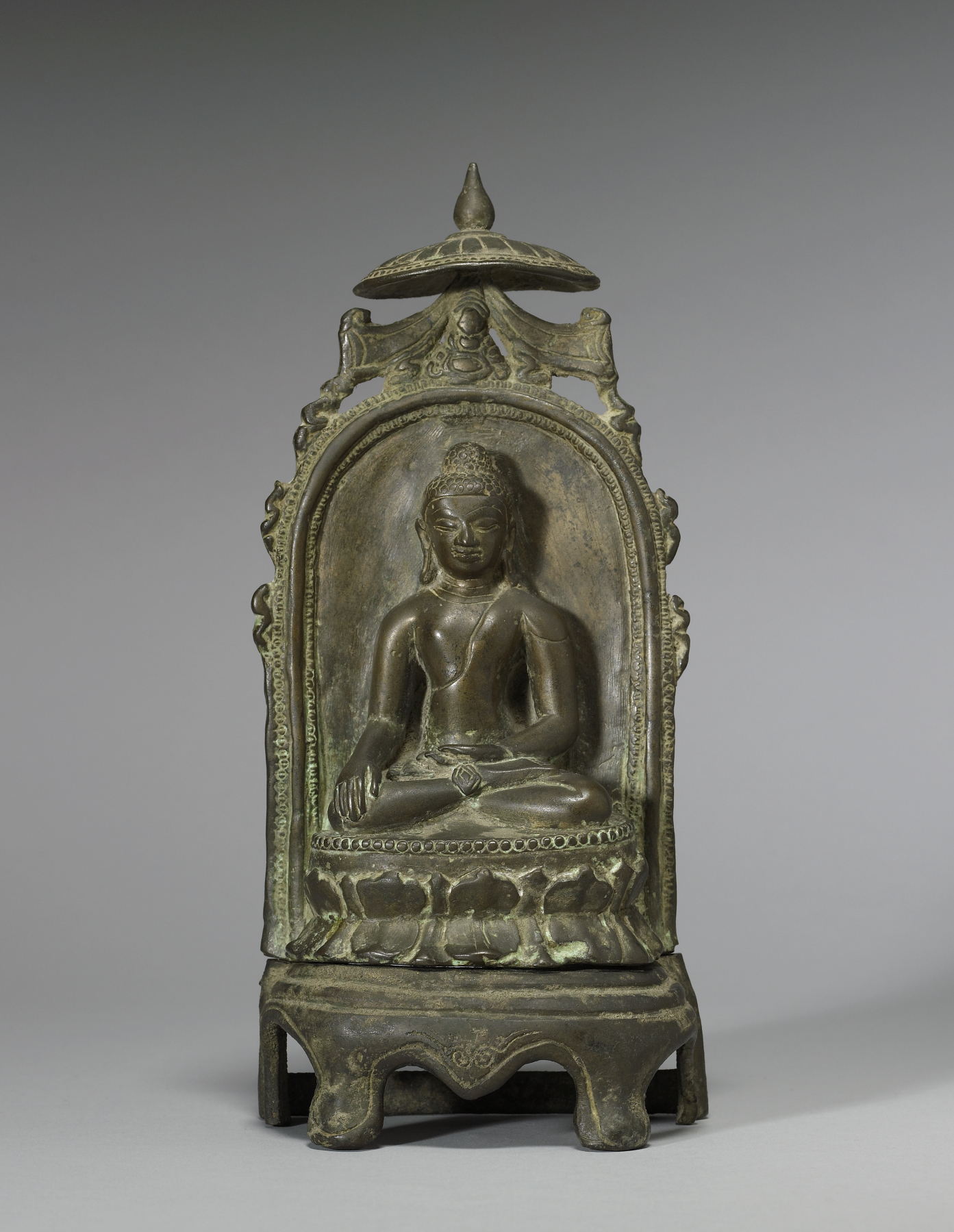Enthroned Seated Buddha
(Southeast Asia )
The stylistic origins of this object in the bronzes of Bangladesh are clear. If it was not made there, it is likely to have been made by a sculptor trained there, or under the auspices of immigrants from there; otherwise it would probably not have been made of brass, nor would it bear an incised "Buddhist creed" at the back. The image appears to have had a renewed life beginning in about the 16th century, when the base was made.
Inscription
Provenance
Provenance (from the French provenir, 'to come from/forth') is the chronology of the ownership, custody, or location of a historical object.
Mr. Amnuey, Lopburi, Thailand [date and mode of acquisition unknown]; Alexander B. Griswold, Monkton, January 30, 1951 [presented to the Breezewood Foundation, November 7, 1956, inv. no. 305]; Walters Art Museum, 1992, by bequest.
Exhibitions
| 1995 | Unearthly Elegance: Buddhist Art from the Griswold Collection. The Walters Art Gallery, Baltimore. |
Geographies
Bangladesh
(Place of Origin)
Thailand (Place of Origin)
Measurements
at knees: 10 3/16 x 2 13/16 in. (25.8 x 7.2 cm);
base: 1 3/4 in. (4.4 cm)
Credit Line
Bequest of A. B. Griswold, 1992
Location in Museum
Not on view
Accession Number
In libraries, galleries, museums, and archives, an accession number is a unique identifier assigned to each object in the collection.
In libraries, galleries, museums, and archives, an accession number is a unique identifier assigned to each object in the collection.
54.2713


